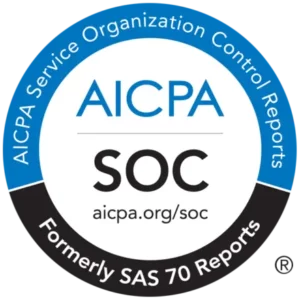AI content detectors are crucial for adopting GenAI responsibly because they can provide the necessary data and insight for content creation, whether you’re on a marketing team, a blogger, or a student. First and foremost, there is a need for transparency around generative AI, and AI detectors provide that assurance.
But just as with AI itself, AI detectors should be part of a process, not the only process. Nor should they be the final word, but instead, what inspires much-needed conversations around generative AI.
In our previous post, we shared our essential “Do’s and Don’ts” about utilizing GenAI. Now, we will cover the “Do’s and Don’ts” of using AI detectors as part of responsible GenAI adoption.
The Copyleaks Do’s and Don’ts of AI Detectors
1. DO use AI detectors as learning tools.
AI detectors can offer a lot of insight and data to encourage essential conversations in classrooms and boardrooms alike to determine the rules and regulations around AI. With AI models still being relatively new and evolving at an unprecedented rate, everyone is still trying to determine where they fit within the day-to-day routine, from students and educators to CISOs and everyone in between. That’s why it’s crucial to utilize AI detectors as learning tools to help offer transparency and support necessary conversations.
2. DON’T use AI detectors for policing.
Because AI content detectors should be utilized as tools to help encourage learning and critical discussions, they should not be used as policing tools. This is especially essential when it comes to education. AI detectors should enhance the learning journey of students, not hinder or intimidate them. As mentioned, everyone is still trying to determine how AI should be utilized. Therefore, opting to use AI detectors for policing defeats the purpose of responsible AI adoption and collaboration when discussing and determining how to implement AI into classrooms and workflows. See each case of AI use as an opportunity for learning and discussion, not punishment.
3. DO know there’s potential for false positives.
While the Copyleaks AI Detector has a 0.2% false positive rate, the lowest of any other offering on the market, that doesn’t mean there isn’t still the possibility of a false positive, no matter how advanced the technology gets. False positives can and do happen with every AI detector. We’d be a bit wary of any platform that declared 0% false positives because we believe there’s always room for error and technological improvement. False positives are not something to be taken lightly. They can damage careers and academic achievements. That’s why it’s essential to be willing to do further investigation when it seems a false positive might have occurred. Open up the conversation following a potential false positive and learn from the experience.
4. DON’T assume
Don’t assume that using AI content was an intentional attempt at cheating or deceiving. For starters, if AI content is detected, it’s essential to stop and ask what the discussions surrounding AI use have been. Instead of assuming and jumping to conclusions, take the opportunity to open up the dialogue. Furthermore, as we previously mentioned, there is always the chance for a false positive. So, when your report states that AI content was found, take the time to investigate further. Again, the data provided by AI detectors should be used to inform the situation and offer the option for a learning opportunity and alignment on expectations.
5. DO set clear expectations.
This brings us to our final ‘Do and Don’t’ for AI detectors: set clear expectations. This encompasses the previous four points we’ve covered. For one, utilizing AI detectors as learning tools helps navigate the waters of AI that we’re all still finding our bearings on. For example, suppose a student assignment is flagged as containing potential AI content. In that case, the first step we encourage educators to take is revisiting the expectations for the assignment and the use of AI and then letting that lead to a discussion with the student so they can learn. Second, not using the AI detector as a policing tool but instead, as a chance to review the conversation surrounding expectations helps establish a healthier and more constructive relationship with your colleagues or students. Third, don’t assume that expectations were clear from the outset. As AI evolves, so will the expectations; therefore, the conversation around GenAI must continue to happen so everyone knows what is expected.
There’s no arguing that generative AI can be a constructive tool when utilized responsibly. By providing essential data, AI detectors can be excellent for sparking conversations around AI, enhancing the learning experience, and helping establish guidelines and expectations.
A final word on AI content detectors: It is vital to research and select a transparent, multi-pronged AI detector. Recent data from Copyleaks reveals that AI models can plagiarize. Therefore, it’s essential not only to verify whether or not your content is AI-generated but also to ensure that it does not contain any plagiarism you may not be aware of. Remember, an AI detector should support responsible AI adoption and help you proactively mitigate all potential risks.

